Planting pumpkins in open ground: rules for growing and care
People have a deep respect for the pumpkin for a long time. A huge number of dishes are "tied" to this tropical berry due to its biological value (it is an excellent dietary product) and indisputable culinary qualities (it is tasty to cook, make juice, eat seeds). Therefore, in order for your table to be distinguished by the maximum variety of dishes, grow pumpkin in your country house!
How to properly plant a pumpkin in open ground and grow (take care - water, feed, shape), read on.
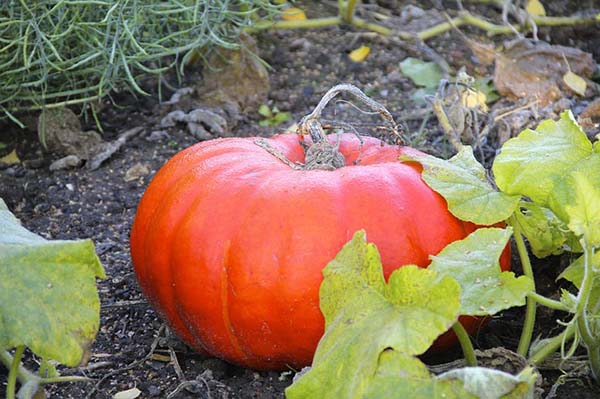
Content
- 1 When to plant pumpkin outdoors
- 2 Selection of the type and variety of pumpkin
- 3 Preparing pumpkin seeds for planting in the ground
- 4 Planting pumpkins in open ground: where and how to plant correctly
- 5 How to care for pumpkin outdoors: growing rules
- 6 When to harvest pumpkin crops and how to store them
When to plant pumpkin outdoors
It is possible to plant pumpkin seeds in open ground when the ground warms up enough (up to +8, or even better up to +12 degrees), and the weather is stable and warm (above +10 .. + 12 degrees).
By the way! Of all pumpkin (zucchini, cucumbers, melons, arzubs), pumpkin is the most cold-resistant. Therefore, even if short-term return frosts occur, the pumpkin will be able to survive, if, of course, it has time to build up the root system.
Depending on the region and climate
Naturally, the timing of planting pumpkin differs depending on the climatic characteristics.
So, in the southern regions, you can start sowing pumpkin seeds in the ground as early as April, in the Central zone (Moscow region) - in the 2-3 decade of May, and in the Urals and Siberia - in the second half to the end of May (3 decade).
According to the lunar calendar in 2020
Many summer residents use the lunar sowing calendar to select a specific day for sowing, planting seeds in accordance with certain phases of the moon. Try it too!
So, in 2020, favorable days for sowing pumpkins in open ground, according to the lunar calendar, are:
- in April - 1, 2, 24, 25, 27-30;
- in May - 2-4, 6, 15-17, 20, 21 25-31;
- in June - 2-4, 11-14.

Unfavorable dates (days of the Full Moon and New Moon, as well as the period when the Moon is in Aquarius, since this is a barren and dry sign -italicized), when it is definitely not worth planting a pumpkin in open ground, in 2020 are:
- in April - 8,15-17, 23;
- in May - 7,13-14, 22;
- in June - 5,9-11, 21.
According to the lunar calendar, from the magazine "1000 Tips for Summer Residents".
Selection of the type and variety of pumpkin
When choosing pumpkin seeds, you should not pay attention to the picture on the package. An orange and smooth-looking fruit is not necessarily the best and necessarily sweet.
Advice! Don't choose the largest varieties.
This is due to the fact that the whole fruit at once is difficult to use somewhere, and after you cut it, there will be a problem with its storage... In addition, small pumpkin varieties are stored better and tend to have a sweeter taste.
In general, pumpkins are of the following types and varieties:
- large-fruited (Gribovskaya winter, Khutoryanka, Sweet pie);
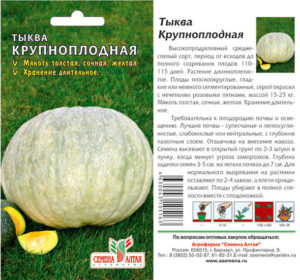
- firm or ordinary (Spaghetti, Kustovaya orange, Golosemyanka, Altai);
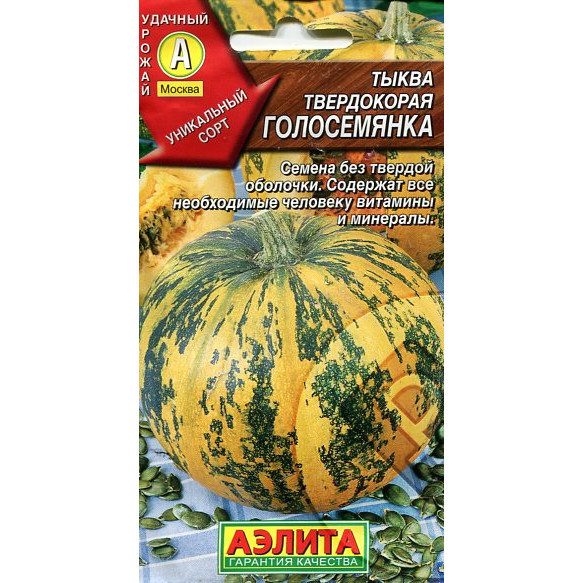
- nutmeg (Pearl, Guitar, Cello, Provencal).

Of course, the most delicious are muscat varieties, but they are the most thermophilic and late ripening. Also hardy ones have excellent taste, they have the earliest ripening period. In general, large-fruited varieties are no less sweet and cold-resistant.
Video: the best pumpkin varieties
Preparing pumpkin seeds for planting in the ground
"Don't expect a good tribe from a bad seed."
Before planting, pumpkin seeds should be carefully selected (calibrated), throwing out all damaged and bent specimens, leaving only the most large and plump.
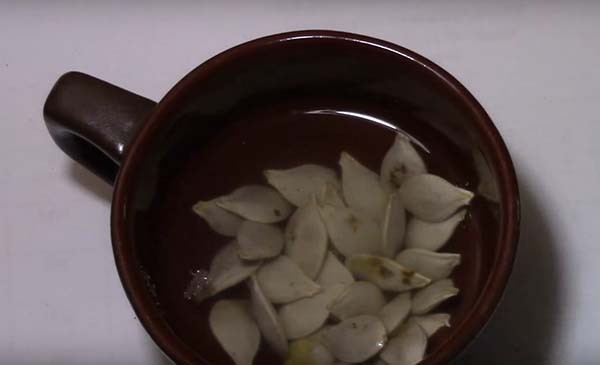
Next, the seeds should be checked for their suitability for sowing, namely, poured into a container with water for 3-4 hours. Seeds that drown can be planted, and those that remain floating on the surface are best thrown away (they are light and empty).
Video: checking pumpkin seeds for plant suitability
Then carry out the direct preparation and processing of pumpkin seeds. This can be done in different ways:
- Soak in a damp cloth in ordinary hot water (50-55 degrees) for 1-2 hours.
And even better in one of the growth stimulants such as Epin or Zircon. You can also germinate in them.
- Disinfect by holding for about 20 minutes in a dark pink solution of potassium permanganate (1%, i.e. 1 mg per 1 liter of water), or even better in a solution Fitosporin (according to instructions)... At the end of the time, rinse under clean water and dry until the required flowability appears.
Advice! In addition to soaking, a hardening procedure can also be carried out. To do this, you need to wrap the seeds in damp gauze and refrigerate for 10-12 hours. Then take it out and put it in a warm place for 10-12 hours. So repeat for 3-4 times (3-4 days), in other words, expose the seeds to temperature changes (stress), and then germinate.
- Just germinate! To do this, first disinfect and then wrap in a damp cloth (or put between cotton pads, napkins), put in a plastic bag (create a greenhouse effect) and put away for germination in a warm place where the temperature is + 22..28 degrees. As a rule, the seedlings will hatch after 2-4 days.
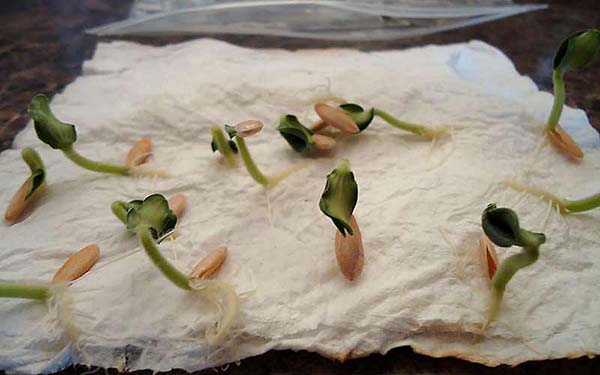
Another way to germinate pumpkin seeds is to sprouting in sawdust... To do this, you need to pour sawdust into a jar, pour boiling water over them and cover with a lid. Then wait a little (so that the temperature drops to room temperature) and add seeds to the sawdust jar. Next, place this jar in a plastic bag and put it in a warm, dark place until germination.
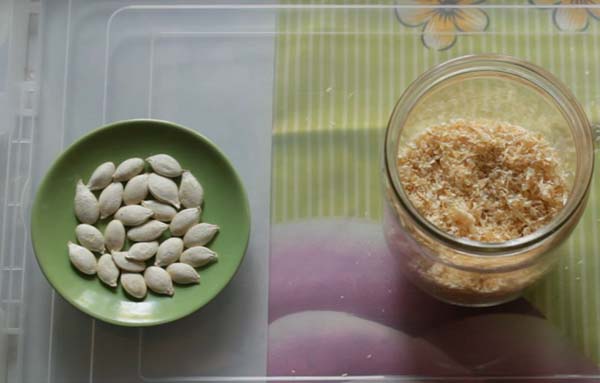
Video: germinating pumpkin, watermelon and melon seeds
To awaken old pumpkin seeds, you need to apply the method of temperature buildup. To do this, tie the seeds in cheesecloth and alternately lower them into hot water (40-50 degrees), then into cold water (directly from the tap, although it is better to use thawed if there is still snow outside your window). This should be done 4-5 times, keeping in water for 5-6 seconds. After the procedure, dry and immediately sow on seedlings or in open ground.
Many summer residents successfully plant pumpkin and dry seeds, but in this case, the planting time should be shifted by 5-7 days, in other words, it is necessary to plant earlier.
Important! If you purchased pelleted (processed) seeds, then they do not need any pre-sowing preparation, they can be sown immediately dry.
However, you can germinate them if you wish.
Planting pumpkins in open ground: where and how to plant correctly
We decided on the timing, bought the seeds, it remains to choose a suitable place for the garden (as well as the method of growing), prepare it correctly (fertilize) and plant seeds or seedlings directly (if they were previously grown at home).
Landing place
When it comes to choosing a place to successfully grow a pumpkin, it is believed that this vegetable, especially its tops, can grow anywhere. But do not plant it in the shade, because in such conditions the fruits will be smaller and the taste will be worse.
However, many gardeners claim that it grows well in shady places, for example, in the corner behind the house on a compost heap.
And yet, if you plant the same variety in the sun, then the result will be simply incredible, of course, if you take proper care of it.
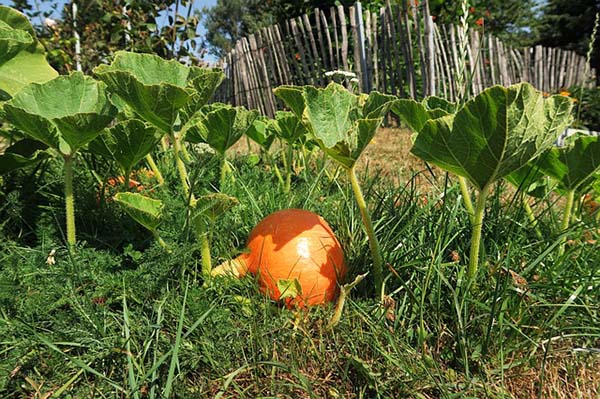
After which it is better to plant
It is good to plant a pumpkin in a place where legumes, all kinds of root vegetables, cabbage, potatoes, onions and garlic used to grow.
Planting after pumpkin relatives such as watermelons, melons, cucumbers and zucchini is not worth it. They have the same diseases.
Another thing is if you sit after them (pumpkin) siderates.
Preparing the garden
Pumpkin very loves fertile soil... The acidity should be neutral at 6-7 pH.
It is quite difficult to grow a decent crop on clay soil. The main problem with clay soil is that pumpkin does not like moist and moist soil. In addition, the clay does not heat up well, and pumpkin seeds love when their roots (legs) are warm.
Even on sandy soil, it grows much better for the simple reason that in this case you can give more frequent fertilizing, and the plant will be able to receive the nutrition required for normal development.
It is very simple to prepare a garden bed for growing pumpkin: you need to dig it well and deeply, add more humus (8-9 kg per 1 sq.m. garden) and wood ash (100-200 grams per 1 square meter of garden). Also, if desired, you can add 30-40 grams of complex mineral fertilizer nitroammofosk per 1 square meter of the garden, and then dig it up again so that everything is mixed.
If your soil is clayey or even loamy, it is advisable to also add sand and high moor peat for digging.
Planting and growing methods: how to equip a pumpkin melon
It is recommended to plant a pumpkin on raised (high) beds or even on mounds.
We remind you! Pumpkin loves when her feet are warm.
Therefore, you can make melon directly on last year's rotted grass, like those on which you can grow other pumpkin seeds, for example, the same zucchini.
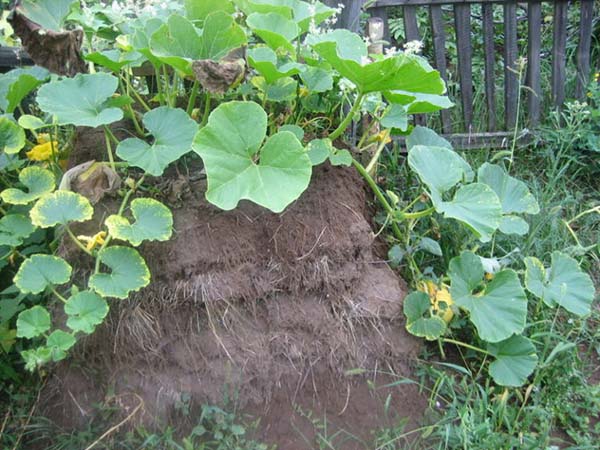
You can grow pumpkins and on trellises, but in this case, you need to plant much closer to each other.
The advantage of this method is that the fruits receive more sunlight and heat, which means they will grow faster and become sweeter. Just remember to tie them up so they don't break off.
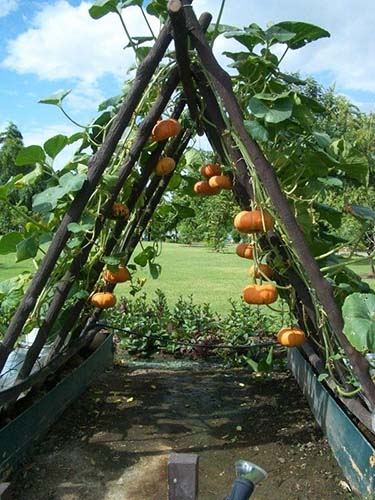 Another interesting option is growing pumpkin in a barrel.
Another interesting option is growing pumpkin in a barrel.
The method is completely similar to the method used for growing cucumbers in barrels.
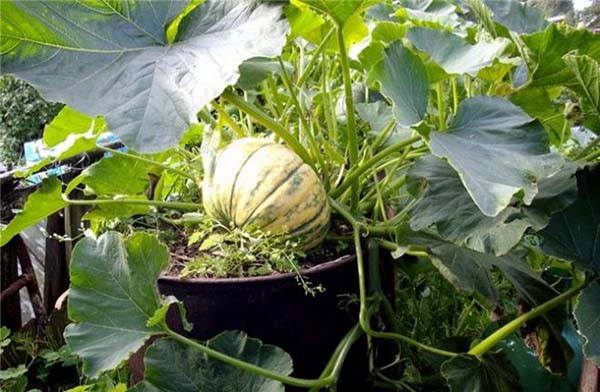
You can grow a pumpkin under the covering material, and then you do not even need to water and weed the pumpkin plantings often.
Video: growing pumpkin without watering and weeding under a covering material
Direct planting of seeds in the ground
Step-by-step instructions for planting pumpkin seeds in open ground:
- Choose a place.
- Prepare a garden bed, apply all the necessary fertilizers for digging.
By the way! To warm up the earth, you can send plastic wrap over it in advance.
- Make planting holes, adding a handful of humus and high-moor peat to them.
- Spill liberally with warm water.
- Sow seeds to a depth of 3-5 centimeters and at a certain distance (depending on the cultivation scheme of a particular variety, which is usually indicated on the seed package; on average, pumpkins are planted at a distance of 80-120 cm from each other).
If you plant with dry seeds, then it is better to sow 2-4 pieces at once in one hole, in order to subsequently remove the weaker ones.
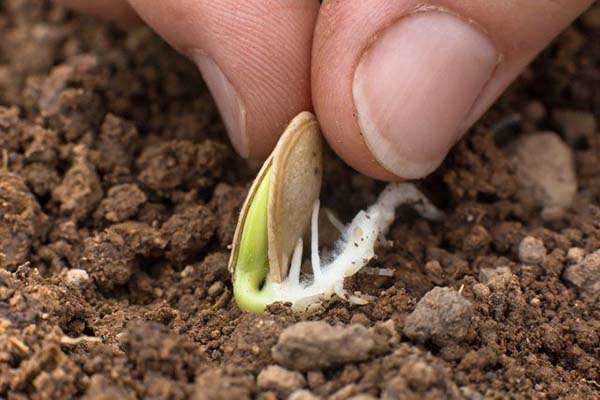
By the way! It is believed that pumpkin seeds (as well as other pumpkin or melons) are best sown horizontally (ie with their “spout” down, if the seed has already sprouted, then “sprout” down), and not vertically.
- Cover with earth.
- Spill lightly with warm water.
- Lightly mulch for insulation, for example with humus.
- Close the bed with covering material (spunbond), or even better with a film.
All this is done because all pumpkin crops at first need to build up a good root system, and for this they need to provide a sufficient amount of heat during the germination period.
Especially this is necessary if the weather is not stable.
Video: planting pumpkins in the spring in open ground
Transplanting
By the way! The site also has an article about how to plant pumpkin seeds and grow seedlings at home.
Planting pumpkin seedlings is done on a pre-prepared bed. The very transplantation from the cups into the ground should be done carefully, slowly taking out the seedlings along with the lump, in no way damaging the root system of the plant. It is better to make the hole large enough. At the bottom, you need to pour a mixture of humus and ash, spill it with warm water, put a seedling, and then cover it with garden soil. As soon as the landing is carried out, the planting can be mulched with humus.
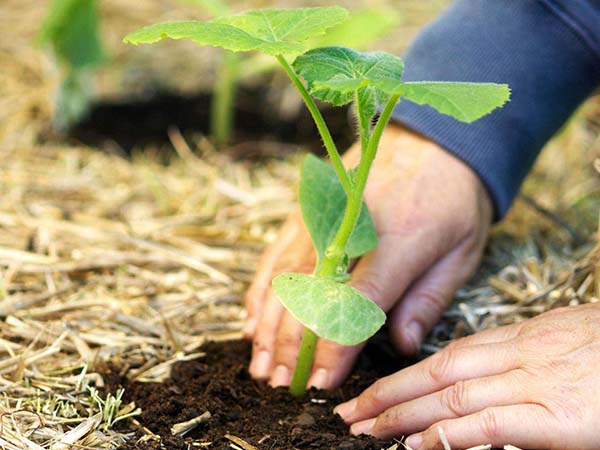
Video: planting pumpkin seedlings in open ground
How to care for pumpkin outdoors: growing rules
In the future, pumpkin care includes watering, loosening after watering to ensure oxygen access to the roots, weeding from weeds, pinching the lashes for better setting and ripening of fruits, as well as feeding as needed.
Advice! Guide the pumpkin lashes as they grow so they don't shadow each other and other plants.
Watering
Water the pumpkin very abundantly, but not often.
Typically, pumpkin is watered about once a week, depending on the climate.
Watering is especially necessary during the period of fruit growth, namely when the fruit becomes the size of a fist (i.e. after pollination).
Note! The pumpkin needs to be watered not only at the root, but also around (i.e. the whole garden), because it is not just that we plant seeds at such a distance.
It is necessary to stop all kinds of watering at the moment when the pumpkin is finally ripe (it stops growing in size).
This is necessary so that the pumpkin lies calmly and its pulp picks up sugar.
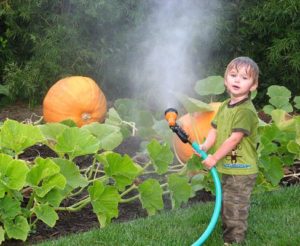
Top dressing
Top dressing nitrogen fertilizers should be performed only at the first stages of active growth and development of seedlings, otherwise it will begin to fatten, increase the green mass to the detriment of flowering and the formation of ovaries.
For example, organic fertilizers such as chicken manure or mullein, as well as herbal infusion, are perfect for this. Or mineral fertilizers - ammonium nitrate and urea (carbamide).
We almost forgot! Phosphorus is also required by melons, albeit not in the same amount as potassium. Therefore, give once phosphorus feeding in the beginning of the growing season still follows. However, if you have correctly prepared the garden in advance and have already entered into it superphosphate, then you can do it.
Worth knowing! The presence of phosphorus has a direct and positive effect on nitrogen availability!
In order for the pumpkin to grow tasty and sweet, it needs potassium supplements. If you are an organic follower, then your choice is wood ash (1-2 glasses of ash in a bucket of water, pour under the root immediately or let it brew for a day). Or you can purchase a ready-made potassium mineral fertilizer, for example, potassium sulfate (potassium sulfate).
By the way! It is very good to pamper a pumpkin with such feeding as potassium humate, in which there are many necessary trace elements... However, potassium humate is not really a potassium fertilizer.
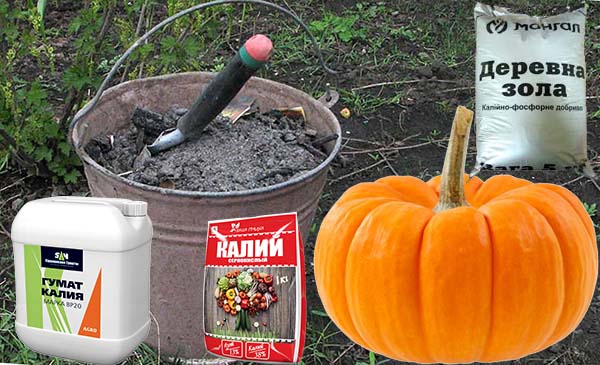
Pollination
If the fruits are not tied, then most likely, they simply did not pollinate, in other words, bees did not fly to your melon or the weather is too cloudy.
Advice! So that you don't have to worry about artificial pollination of the pumpkin, you can plant plants and flowers that bees love next to it.
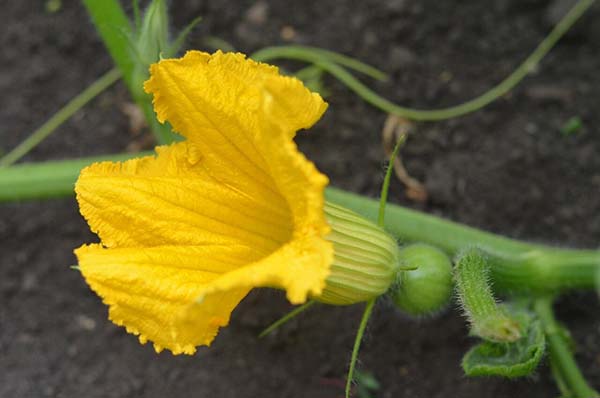
So you have to artificially pollinate pumpkin. This is pretty easy to do. To begin with, you need to choose a dry and warm day (cloudy is also suitable, as long as it does not rain). Next, cut off the male flowers, remove the petals and press the stamens to the pistil female flower (they have there is a small green fruit at the base).
It is even easier to determine that the pumpkin has been pollinated: the flower will begin to dry out, and the fruit will increase in size.
Video: how to manually pollinate pumpkins
Question! What to do if female flowers do not appear at all, but only male ones? Why is this happening?
Barren flowers (male flowers) appear in a pumpkin if the plant is in unfavorable conditions or lacks something. Often too abundant and frequent watering leads to this.
In this case, watering should be stopped and the plants should be given a short-term drought.
Alternatively, you can pinch the main stem so that the side shoots go, which should have more female flowers.
Formation (topping)
Advice! The site already has a separate detailed article about how to form a pumpkin in the open field.
Video: pumpkin formation
Substrate for fruits
To prevent rotting of the lower part of the pumpkin, even in the initial stage of fruit development, place a wooden plank under it or place it on a box.
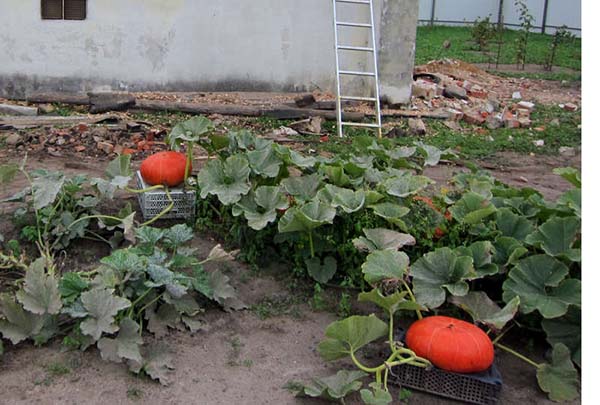
If you grow on trellises, then the hanging fruits can be placed in nets and tied to supports.
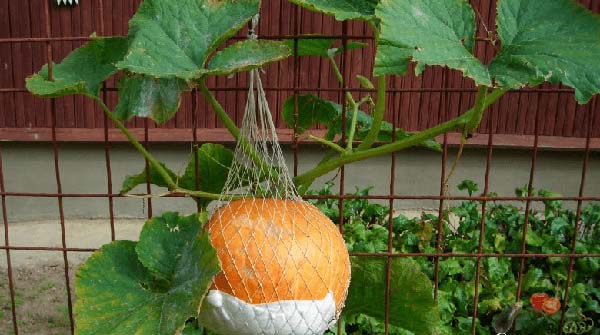
When to harvest pumpkin crops and how to store them
You need to have time to harvest the pumpkin before frost. As a rule, this is done at the beginning of autumn, i.e. during September. You can determine that it's time for harvesting by 2 parameters: by timing and by the appearance of the fruit.
Note! The site already has an article about when can you determine when it's time to harvest pumpkin.
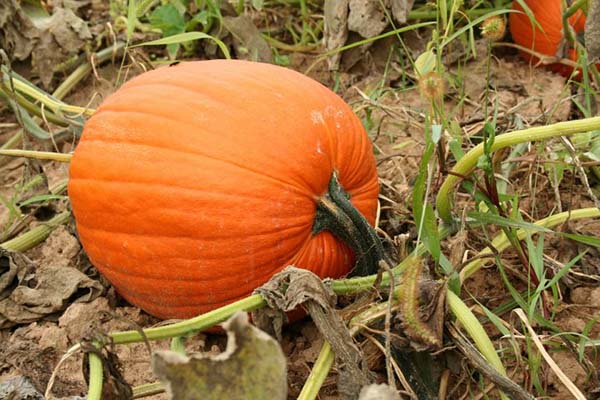
Video: harvesting pumpkin
Important! Oh ways to store pumpkin for a long time you can find out from this detailed article.
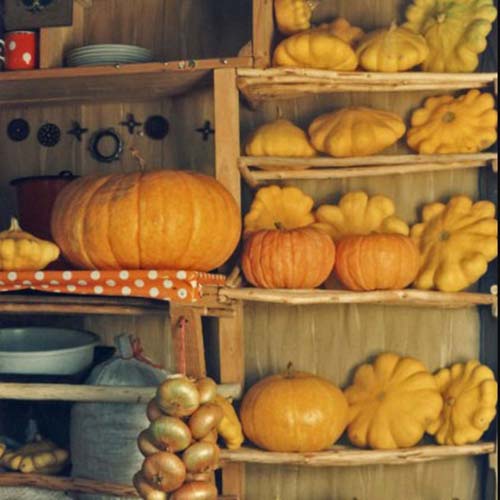
If you are overwhelmed by an irresistible desire to grow a pumpkin in the open field in your country house, consider our good advice and recommendations so that no mistake in planting and care will nullify the time and your efforts.
Video: how to grow pumpkin

